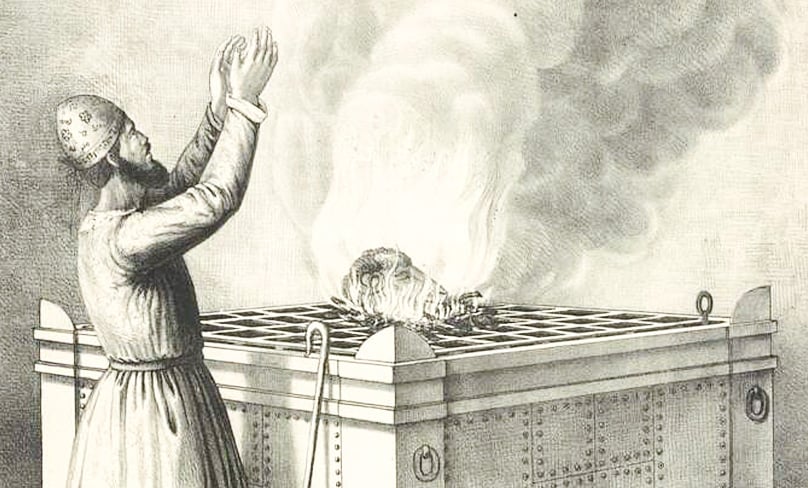
Dear Father, In reading the Bible I get the impression that blood for the Jews had a significance which went well beyond what it would mean for us Christians. Why was that and what were some of the implications?
You are correct in what you say, and there are a number of important implications. The basis of the Jewish outlook is that blood was regarded as the life of the being. For example, in the book of Leviticus we read: “If any man of the house of Israel or of the strangers that sojourn among them eats any blood, I will set my face against that person who eats blood, and will cut him off from among his people … For the life of every creature is the blood of it” (Lev 17:10, 14).
Because of this, there was an absolute prohibition on the consumption of blood, so meat could not be eaten with the blood still in it. The blood had to be drained from the animal or bird before the flesh was eaten, following the kosher regulations still in force today. We see this too in the New Testament, when the apostles and elders meeting in Jerusalem decided to tell the Christians in Antioch that among the few things to be demanded of Gentile converts was that they were to “abstain from what has been sacrificed to idols and from blood and from what is strangled” (Acts 15:29). Naturally, the prohibition of eating blood was only for that particular time, as blood was not forbidden for Christians in later times.
In view of this absolute prohibition among the Jews, we can understand better why, when Jesus told the people in the synagogue of Capernaum that they should eat his flesh and drink his blood, they were horrified. St John relates: “The Jews then disputed among themselves, saying, “How can this man give us his flesh to eat?’” (Jn 6:52). It was not only that the Jews interpreted Jesus literally, thinking that he expected them to be cannibals and eat his flesh, but also, and perhaps especially, that they would never think for an instant of drinking blood.
“Blood was also used in the rite of purification of a leper who had been cured of the disease. A live bird was dipped in the blood of a bird that had been killed and the blood was then sprinkled seven times on the one who had been cured (cf. Lev 14:1-9).”
For the Jews, blood was shed in sacrifices for the atonement of sin. God tells the Israelites in the Old Testament: “For the life of the flesh is in the blood; and I have given it for you upon the altar to make atonement for your souls; for it is the blood that makes atonement, by reason of the life” (Lev 17:11). The Jews at that time had a variety of sacrifices of animals, one of which was offered for the atonement of sins. We can see here how those atonement sacrifices prefigured Christ’s shedding of blood on the Cross for the atonement of the sins of mankind.
When Moses had received the Ten Commandments from God, he read them out to the people as the terms of the covenant between God and them. When the people agreed to abide by the Commandments, Moses sprinkled the blood of oxen first on the altar and then on the people, saying, “Behold the blood of the covenant which the Lord has made with you in accordance with all these words” (Ex 24:3-8). These words prefigure the words of Christ in instituting the Eucharist in the Last Supper: “This chalice which is poured out for you is the new covenant in my blood” (Lk 22:20).
Blood was also used in the rite of purification of a leper who had been cured of the disease. A live bird was dipped in the blood of a bird that had been killed and the blood was then sprinkled seven times on the one who had been cured (cf. Lev 14:1-9). On the eighth day the blood of a male lamb that had been killed as a sin offering was daubed on various parts of the person’s body (cf. Lev 14:10-20).
Apart from the use of blood in these ritual ceremonies, Jews were forbidden to touch blood in many ways. For example, a man would become ritually impure if he engaged in sexual acts with a woman during her period of menstruation or after she had given birth (cf. Lev 18:19, 12:2). He would also become impure if he touched a corpse (cf. Num 19:11). This may explain why, in the parable of the Good Samaritan, when a man had been beaten and left half dead, a priest and a Levite passed by on the other side of the road, and only a Samaritan attended to him. The priest and Levite put their possible ritual impurity before the duty of charity, while the Samaritan, who was not a Jew and would not incur ritual impurity, looked after the man (cf. Lk 10:30-37).
